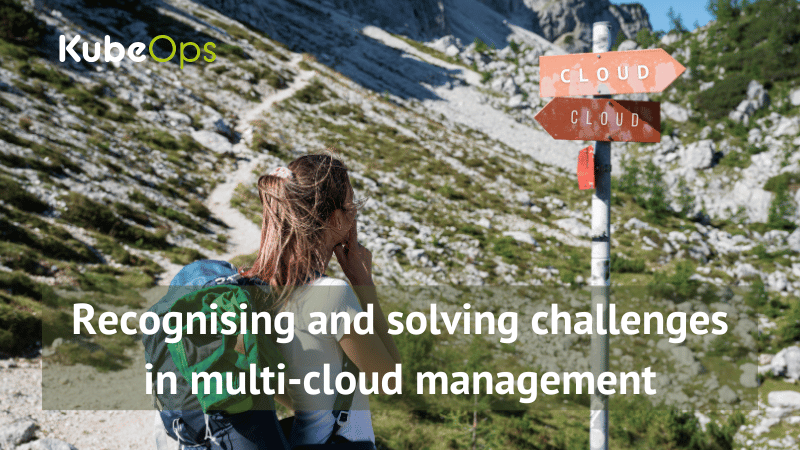Blogs
Recognising and solving challenges in multi-cloud management

More and more companies are pursuing a multi-cloud strategy in order to benefit from the flexibility of different providers, fulfil regional requirements or use specific cloud services. Kubernetes has established itself as the standard for orchestrating containerised applications. However, despite its strengths, managing Kubernetes across multiple cloud environments presents companies with a number of challenges.
This article provides an overview of the typical challenges in multi-cloud Kubernetes management and highlights solutions that can help companies overcome this complexity. The aim is to provide decision-makers with a sound basis for developing their own cloud strategy.
Challenges in multi-cloud Kubernetes management
Managing Kubernetes across multiple clouds poses numerous challenges. The most important problem areas that companies frequently encounter in this context are described below.
1. Complex configuration management
Each cloud provider uses its own standards and tools to deploy and manage Kubernetes clusters. These differences often lead to:
- Inconsistent deployments between cloud providers
- Increased administrative effort due to manual adjustments
- Higher error rates due to different configurations
Solution approach:
The use of infrastructure-as-code tools such as Terraform enables standardised deployments. Platforms that offer centralised management significantly reduce the configuration effort and ensure consistent environments.
2. Security and compliance requirements
Multi-cloud strategies make it difficult to implement a standardised security architecture. Different security tools and protocols depending on the provider increase the risk of security gaps. Challenges include
- Inconsistent access controls
- Different encryption standards per cloud provider
- Difficult implementation of compliance requirements in global environments
Solution approach:
A central identity provider and consistent security guidelines provide a remedy. Automated compliance checks and tools such as Open Policy Agent (OPA) help to comply with regulations such as NIS2 or ISO 27001.
3. Cost management and resource efficiency
Multi-cloud environments harbour the risk of hidden costs. Without clear cost control, there is a risk of
- Unexpected expenditure due to inefficient use of resources
- Lack of transparency in the billing models of different providers
- Difficulties in optimising workloads across multiple clouds
Solution approach:
Specialised tools such as Kubecost offer transparency and enable proactive optimisation. Companies should also carry out regular cost analyses and define guidelines for resource allocations.
4. Data management and performance
Storing and processing data in multiple clouds presents companies with major challenges:
- High latency times for cross-location data queries
- Data inconsistencies due to inadequate synchronisation mechanisms
- Increased risk of data loss due to a lack of redundancy
Solution approach:
Cloud-agnostic storage solutions and modern data replication strategies ensure consistency and availability. The use of a global content delivery network (CDN) can minimise latency times.
5. Skills shortage and increasing complexity
Managing multi-cloud Kubernetes environments requires specialised expertise. Frequent challenges are:
- Lack of expertise in individual cloud platforms
- High training costs for internal teams
- Dependence on external service providers
Solution approach:
Targeted training programmes and the use of managed services help to deploy resources efficiently. It is also advisable to set up an interdisciplinary team that combines cloud and security expertise.
Solutions for effective multi-cloud management
A holistic approach is recommended to overcome the challenges mentioned:
✅ Standardised management platforms: Ensure consistent deployments and centralised control of all clusters.
✅ Automated security and compliance checks: Facilitate compliance with legal regulations.
✅ Transparent cost control: Tools provide insight into resource usage and enable proactive optimisation.
✅ Efficient data management: Minimises latency and ensures data integrity across cloud boundaries
✅ Continuous training: Keeps teams up to date and reduces dependencies.
Conclusion
Multi-cloud Kubernetes management is complex, but manageable. Companies that invest in standardised management solutions, effective security strategies and continuous training at an early stage can not only minimise risks but also secure competitive advantages. The right combination of technology, processes and expertise is the key to success.

